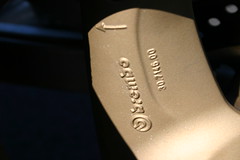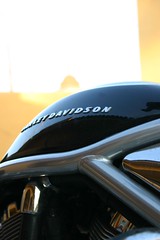Lane splitting is a subject that is often motorists' minds. Maybe you hate lane splitters, especially that idiot that nicked your mirror. Maybe you hate them because you're stuck in traffic and they're not. Well, the reality is that EVERYONE loves a lane splitter, and you mother would approve if you split lanes too.
Preposterous statement out of the way, let's discuss the issues:
Lane splitting is not dangerous. Not by itself, though. In fact, lane splitting keeps you from being rear-ended. Did you think about that? When approaching stopped traffic, try to split. This is for your safety.
Let me get a technicality out of the way first: in California it's lane sharing, as you're not supposed to be riding on top of the lines, but on one of the lanes, with another car. Also, in case it is not obvious. Splitting is not legal in most US states... actually, probably only legal in California.
From wikipedia: lane splitting:
The Hurt Report, published in 1981 and based on accident data gathered in the 1970's, concluded that lane splitting reduces rear end crashes and improves motorcycle safety. FARS data from the United States Department of Transportation shows that rear end collisions with motorcycles are 30% lower in California (the only US state where it is legal) than in Florida or Texas, states with similar riding seasons and populations.
The Oxford Systematics report commissioned by VicRoads, the traffic regulating authority in Victoria, Australia, found that for motorcycles filtering through stationary traffic "No examples have yet been located where such filtering has been the cause of an incident."
“ Lane splitting is more than a congestion reducer or a convenience for the road denizens who are willing to accept and manage more risk by motorcycling. It is a tool that can literally save a biker's life, especially in situations where they're being tailgated, crowded, or flat-out ignored by others. „
—Tim Kreitz, moto-journalist & MSF riding instructor
I bet you never saw it that way.
Splitting safely involves several guidelines:
- Watch for other drivers
- Watch your speed
- Practice
Watching for other drivers is crucial. As you already know, people drive distracted, don't use their signals or just don't see or expect you. Nightmare scenario is a driver suddenly changing without warning and without seeing you. What do you do?
This is where your other skills come into play, and are the next two points: Watch your speed. If you're going too fast, you won't have time to react and you're more likely to be unseen. How fast is too fast? More than 10mph faster than the slowest lane could warrant an extra pause for thought. Again, this is ballpark, as the more skilled you are with your bike, the easier you can get out of trouble at faster speeds.
Watch your speed. If you're going too fast, you won't have time to react and you're more likely to be unseen. How fast is too fast? More than 10mph faster than the slowest lane could warrant an extra pause for thought. Again, this is ballpark, as the more skilled you are with your bike, the easier you can get out of trouble at faster speeds.
I usually don't split if traffic is decent and moving along. In the end, my fail proof excuse for doing it is to avoid getting rear-ended, which is less plausible if everyone is doing 65mph and I'm passing at 85 (hypothetically). Yet another reason to slow down is to keep drivers comfortable. Last thing you want is a pissed off driver around you.
You'll likely encounter many riders going faster than you. Don't get pressured, pull aside into a lane and let them pass you. Pushing your limits on a motorcycle is what gets people into bad situations. As you gain experience (or lose good judgement), you'll figure out what speed is comfortable for you. That's ultimately the goal.
Practice, practice, practice. Those mirrors look awfully close, and those trucks awfully big. Stay well within your comfort zone and learn the quirks. Things to be on the lookout for:
- Weaving drivers: Most people have an oscillating pattern, some much wider than others
- Road crappiness: Lanes abruptly changing height can give you a good scare at first, as the road will upset your bike. In time, you'll deal with these just like you deal with gusts of wind. Yes, they will make you crap your pants the first time, but you'll be ok.
- Invisibility: A noisy exhaust helps (though pisses off your neighbors), but in general just assume people haven't seen you, or even the car next to them. Be prepared to brake or swerve. Your "safety pocket" (which you will learn all about in your MSF course) is smaller now, which is why it is good to reduce your speed.
In case you're wondering: no, the lane reflectors won't make you wipe out, they're just bumpy to remind you you're splitting, not sharing. tsk, tsk.


